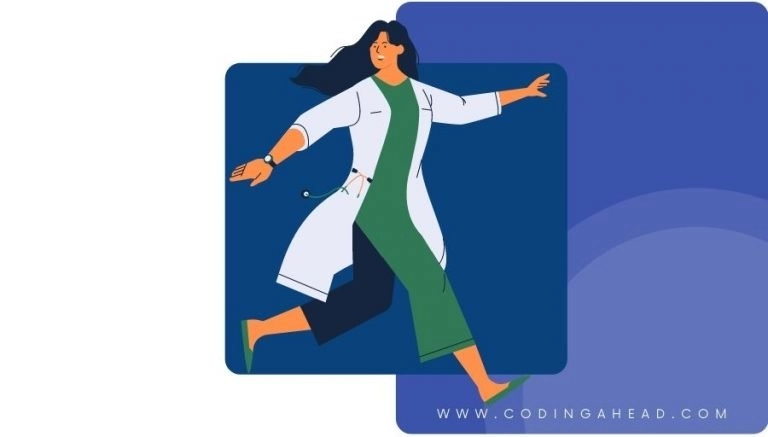How To Use CPT Code 93307
CPT 93307 is a code for transthoracic echocardiography, a diagnostic procedure that provides real-time 2D images of the heart. This article will cover the description, procedure, qualifying circumstances, usage, documentation requirements, billing guidelines, historical information, similar codes, and examples of CPT 93307.
1. What is CPT 93307?
CPT 93307 is a diagnostic procedure code used for transthoracic echocardiography, which involves obtaining real-time two-dimensional (2D) images of the heart through the chest wall. This procedure is essential for evaluating the heart’s structure, function, and blood flow, and it includes M-mode recording when performed. CPT 93307 does not include spectral or color Doppler echocardiography.
2. 93307 CPT code description
The official description of CPT code 93307 is: “Echocardiography, transthoracic, real-time with image documentation (2D), includes M-mode recording, when performed, complete, without spectral or color Doppler echocardiography.”
3. Procedure
The 93307 procedure involves the following steps:
- The patient is appropriately prepped, and a gel is applied to the chest wall.
- A small transducer is placed on the chest wall, generating high-frequency sound waves that bounce off the heart and back to the probe.
- The probe is connected to a monitor that displays the images of the heart.
- The gel helps the provider move the probe in different directions on the chest to obtain images of the heart.
- Standard views for a complete echocardiogram include subcostal, apical, parasternal, and suprasternal.
- M-mode recording detects heart motion toward and away from the transducer to evaluate the volume of blood being pumped by the heart.
- The provider views and examines the heart’s movement, blood flow through various blood vessels and valves, and evaluates any congenital abnormalities.
4. Qualifying circumstances
Patients eligible to receive CPT code 93307 services are those who require a comprehensive evaluation of their heart’s structure, function, and blood flow. This may include patients with suspected or known heart disease, heart valve disorders, congenital heart abnormalities, or those experiencing symptoms such as chest pain, shortness of breath, or palpitations. Additionally, CPT 93307 may be used for monitoring the progress of a previously diagnosed heart condition or evaluating the effectiveness of a treatment plan.
5. When to use CPT code 93307
It is appropriate to bill the 93307 CPT code when a provider performs a complete transthoracic echocardiogram without spectral or color Doppler echocardiography. This code should be used for patients who require a comprehensive evaluation of their heart’s structure, function, and blood flow, as mentioned in the qualifying circumstances section.
6. Documentation requirements
To support a claim for CPT 93307, the following information should be documented:
- Patient’s medical history and presenting symptoms
- Indication for the echocardiogram
- Details of the procedure, including the views obtained and any M-mode recording performed
- Findings and measurements of the heart’s structure, function, and blood flow
- Any observed abnormalities or concerns
- Provider’s interpretation and conclusions
7. Billing guidelines
When billing for CPT code 93307, consider the following guidelines:
- Append professional component modifier 26 if reporting only the professional component for the service.
- Append technical component modifier TC if reporting only the technical component for the service, unless the hospital provided the technical component. In that case, do not append modifier TC.
- Do not append a professional or technical modifier when reporting a global service in which one provider renders both the professional and technical components.
- Do not report CPT 93307 in conjunction with 93320, 93321, or 93325.
8. Historical information
CPT 93307 was added to the Current Procedural Terminology system on January 1, 1990. The code was changed on January 1, 2009, with the previous descriptor being “Echocardiography, transthoracic, real-time with image documentation (2D) with or without M-mode recording; complete.”
9. Similar codes to CPT 93307
Five similar codes to CPT 93307 and how they differentiate are:
- CPT 93306: Includes spectral Doppler echocardiography and color-flow Doppler echocardiography.
- CPT 93308: A limited or follow-up transthoracic echocardiogram without spectral or color Doppler echocardiography.
- CPT 93350: A complete transthoracic echocardiogram performed during a stress test.
- CPT 93351: A complete transthoracic echocardiogram performed during a stress test, including the supervision of the test.
- CPT 93312: A transesophageal echocardiogram, which involves inserting a probe into the esophagus to obtain images of the heart.
10. Examples
Here are 10 detailed examples of CPT code 93307 procedures:
- A patient with a history of heart murmur undergoes a CPT 93307 echocardiogram to evaluate the structure and function of their heart valves.
- A patient experiencing chest pain and shortness of breath undergoes a CPT 93307 echocardiogram to assess for possible heart disease.
- A patient with a known congenital heart defect undergoes a CPT 93307 echocardiogram to monitor the progression of their condition.
- A patient with a history of heart failure undergoes a CPT 93307 echocardiogram to evaluate the effectiveness of their treatment plan.
- A patient with a suspected pericardial effusion undergoes a CPT 93307 echocardiogram to confirm the diagnosis and assess the severity.
- A patient with a history of atrial fibrillation undergoes a CPT 93307 echocardiogram to evaluate the size and function of their left atrium.
- A patient with a prosthetic heart valve undergoes a CPT 93307 echocardiogram to assess the function and integrity of the valve.
- A patient with a history of myocardial infarction undergoes a CPT 93307 echocardiogram to evaluate the function of their left ventricle.
- A patient with a suspected aortic aneurysm undergoes a CPT 93307 echocardiogram to assess the size and shape of their aorta.
- A patient with a history of endocarditis undergoes a CPT 93307 echocardiogram to evaluate for any residual damage to their heart valves.


